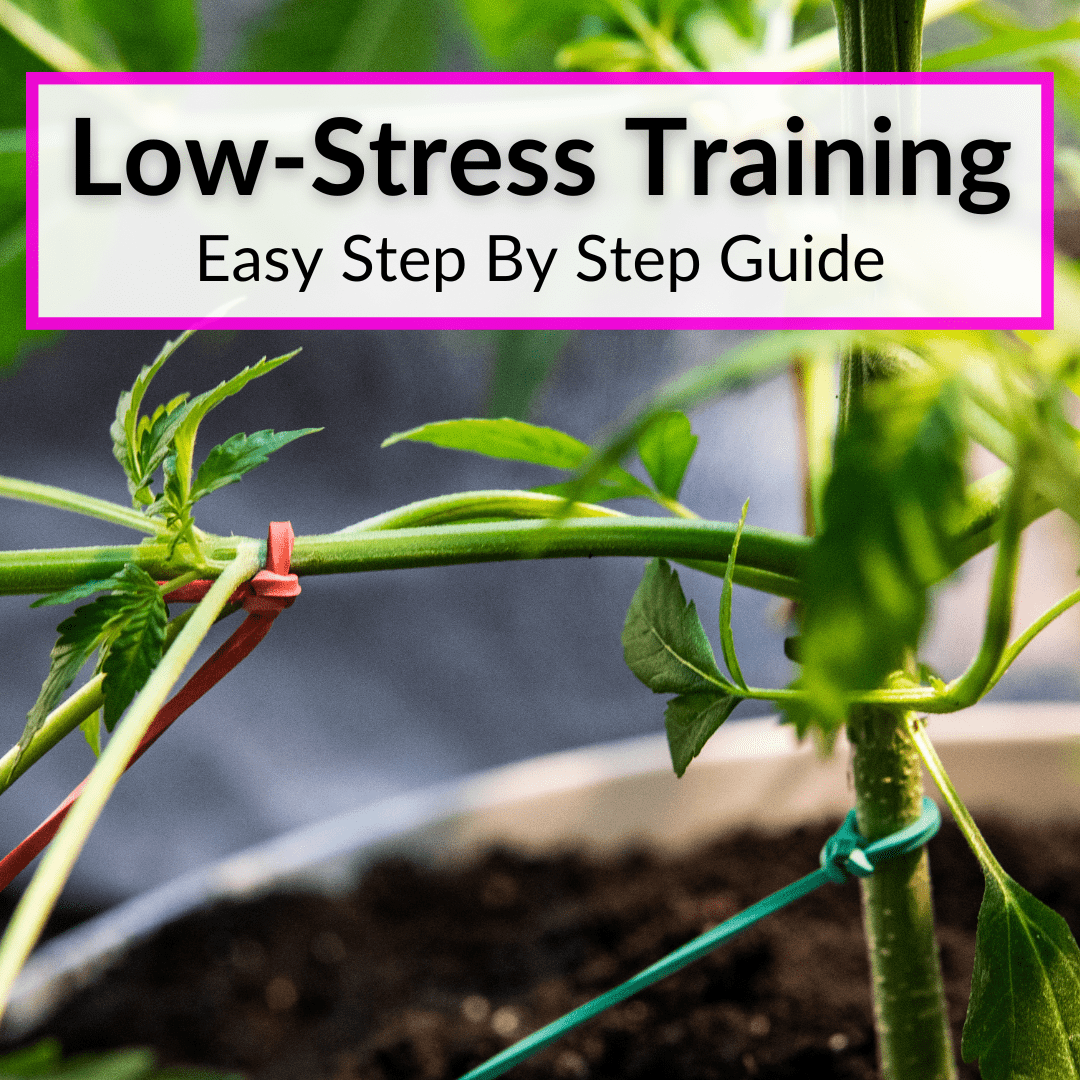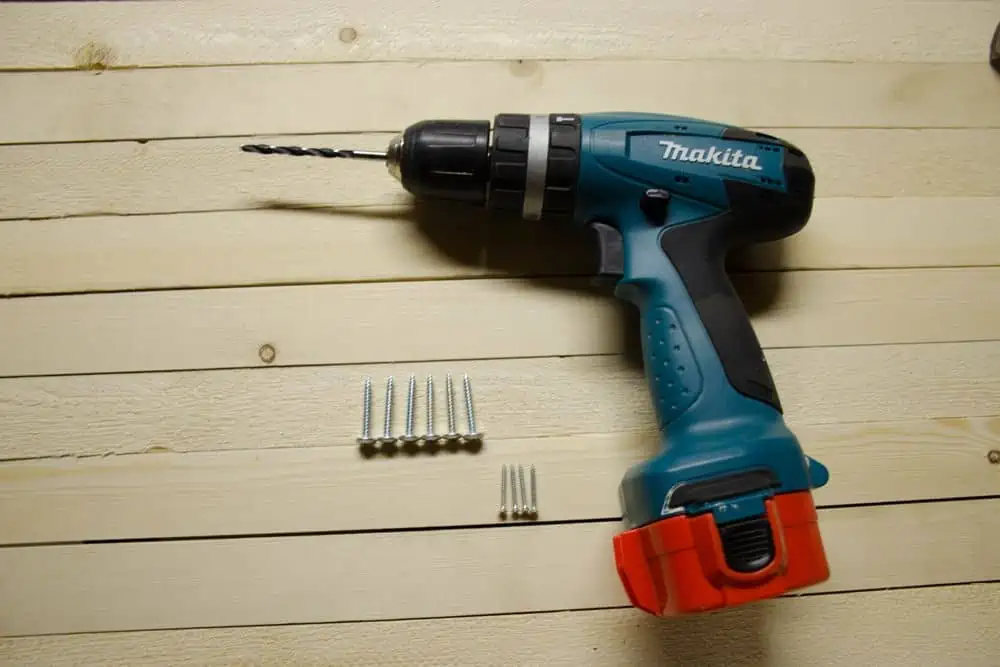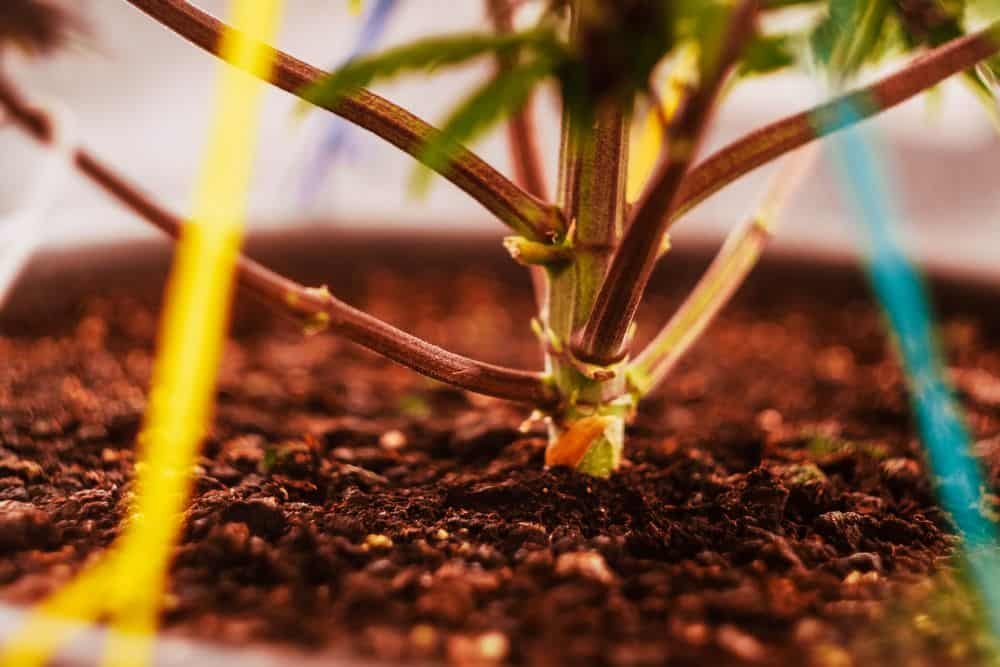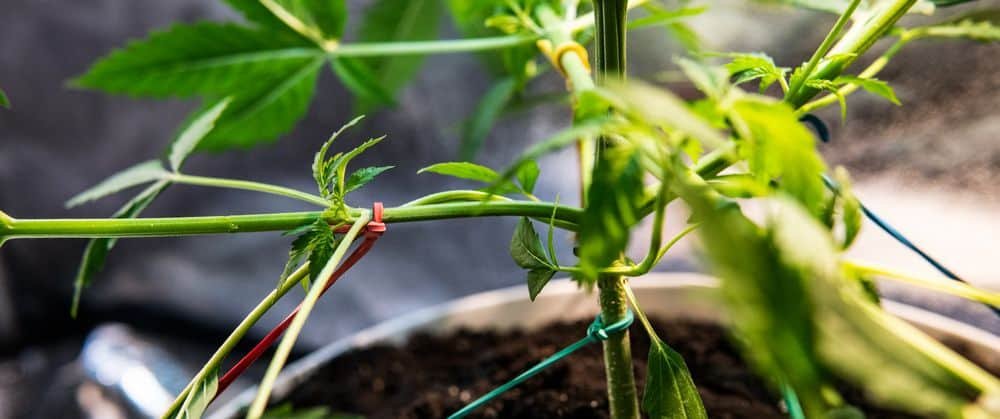
When you first start growing cannabis, it is important to get the basics right.
That is why my guide on growing cannabis focuses on setting up a simple grow.
But once you have a few successful grows under your belt, you’ll want to look into some more advanced techniques.
I still recommend keeping it simple. Many advanced techniques are a lot of work or cost a lot of money, for minimal results.
Ignore those. But do not ignore low-stress training. It is one of the best tools to add to your toolbox.
LST can give you a huge boost in yield, but it costs very little and does not require much time either.
Keep reading to learn exactly how to use LST to give a huge boost to the yield of your marijuana plants.
Contents
- 1 Low-Stress Training Step By Step
- 2 Low-Stress Training Guide: Final Thoughts
Low-Stress Training Step By Step
We will begin our step-by-step guide on low-stress training weed plants with a brief list of the materials you will need. As you can see, the costs of LST are quite low. Given the huge impact on yields, this is one of the best things you can do to boost your production.
Materials Needed
- Soft plant ties or rubber-coated plant wire
- Bamboo or wooden stakes
- Drill (if using plastic pots)
- Duct tape or eco-friendly tape
Step 1: Setting-Up Anchor Points
Before you begin bending your cannabis plants, you need to set up anchor points in your growing space. These anchor points should be sturdy and strong enough to hold the weight of your plant.
How you do this will depend on where you are growing your cannabis plants. If you’re using a plastic flower pot, you’ll need to use a drill to make four or more evenly-spaced holes around the rim of the pot.
If you are growing your plants in a container that is not suitable for drilling holes, you can use the bamboo stakes as anchor points instead. Insert the stakes into the growing medium around the rim of the container.
Step 2: Making The First Bend
To start the low-stress training, you want your plants to be at the beginning of their vegetative stage. The time to make the first bend is when your plants are in the very early stages of the vegetative stage.
Gently bend the main stem of your cannabis plant down toward an anchor point. It’s extremely important that you do this gently. Snapping the stem of your plant is the last thing you want to happen.
Locate the upper-most node on your plant and then gently pull it down toward an anchor point Use a plant tie to secure the top node to the anchor point.
Your plants will adjust to the first step of low-stress training within 12 to 24 hours. At first, the node is bent sideways. But over time, you’ll notice the upper-most node, along with lateral nodes, will begin to turn upwards, toward the light.
Should you have the misfortune of experiencing a snapped branch, use the duct tape to re-establish a bond between the broken section and the stem. Snugly wrap the fractured section with duct tape and allow the area to heal over the next few days.
Step 3: Keep Bending As They Grow
As your cannabis plants grow, continue to gently bend the stems to encourage more even growth and to prevent the plant from becoming too tall.
By bending the plant, you can encourage it to grow more laterally, resulting in the individual branches receiving more light. This helps you grow bushier plants with fatter buds.
As the stems continue to grow, you should continue tying down branches to create an even canopy.
A few days after making the first bend, you should look for the next dominant stem and gently bend it down toward an anchor point on the opposite side of the pot from the first bend. Gently secure it in place as you did with the first bend.
You should continue anchoring your plant’s branches in this way as it grows. Keep in mind that the aim of LST is to achieve an even canopy in which all buds receive plenty of light. This means you need to avoid overlapping the branches.
Step 4: Allow Your Plants To Grow
Step four requires patience. You need to let your plant grow now. Your cannabis plants should now be wide and bushy, but not very tall. By bending the branches, you have opened the inner section of your cannabis plant up to the light, which fuels rapid growth.
At this point, you can sit back a little and allow your plants to grow through the vegetative stage. As they grow, keep an eye on the new growth and ensure the canopy remains evenly spread to maximize the amount of light it receives. This may require some trimming.
Step 5: Watch The Buds Develop
As your plants end the vegetative stage, they will ready themselves for the much-anticipated flowering stage. If you notice that one section is outgrowing the rest of your plant, add another anchor to tie that branch down to maintain an even canopy.
Once the buds start to form, it’s time to kick back and watch them get fatter and fatter. Since the LST process has opened up the plant, buds will form in the top, middle, and lower sections, making the most of the extra space and light.
Low-Stress Training: Related Questions
Below we will answer a few common questions related to the low-stress training of marijuana plants. If you have any further questions, please feel free to ask them i the comments below.
What Are The Benefits Of LST?
LST helps you create the size and shape you desire your plant to be, giving you a much larger yield, if you grow indoors with lights or outdoors using natural sunlight. Additionally, LST reduces the height of your plants, leaving more space to hang the lights, if you are growing in a tent.
What Is The Difference Between HST And LST?
Low-stress training (LST) and high-stress training (HST) techniques are similar in that they can help achieve the benefits just mentioned with a minimal monetary investment and a little extra time.
LST involves bending your plants into a desired shape, while HST methods are based on intentionally wounding the cannabis plant via topping and pruning.
Is It Better To Top Or Use LST?
Topping is effectively used to obtain multiple, even-sized floral sites, while LST is then used to bring these floral sites to the same height to maximize the amount of light they receive. You can use both methods together.
Does LST Create More Colas?
Low-stress training encourages the growth of more colas. An increase in the number of colas means more buds for you to harvest. Another benefit of LST is that it allows you to limit the maximum height of your plants, which can be critical in an indoor garden when you’re growing plants that may grow to be more than 7 feet tall.
Low-Stress Training Guide: Final Thoughts
As you can see, low-stress training is not difficult at all. The hardest part is making sure you do not bend the branches so much that they break. Go slowly at first. After you have done it a few times, you will get a feel for it.
If you follow this low-stress training step-by-step guide, you will have your plants growing wider and bushier, with far more colas. And it won’t cost you much money or take up much of your time.



Leave a Reply